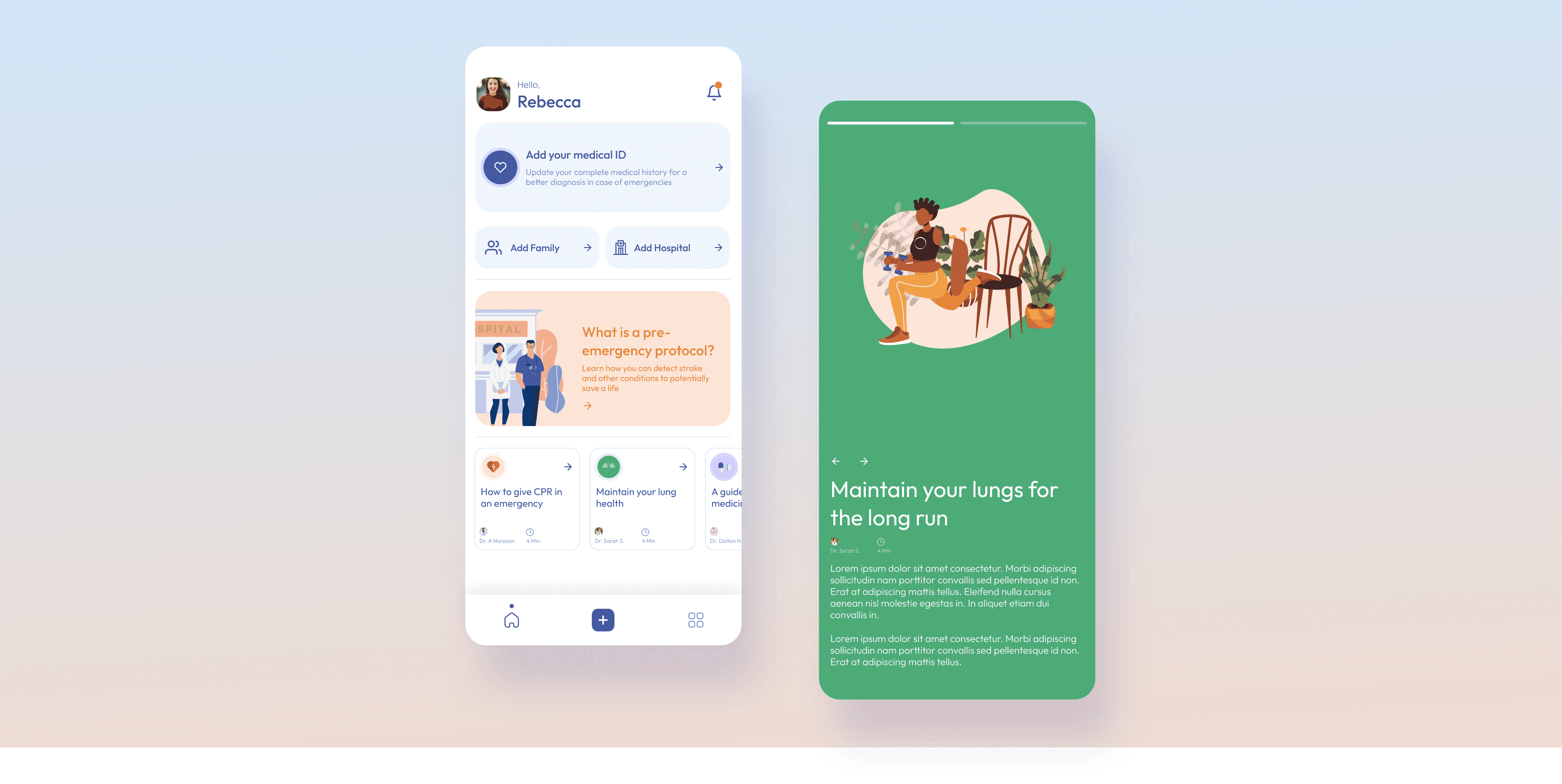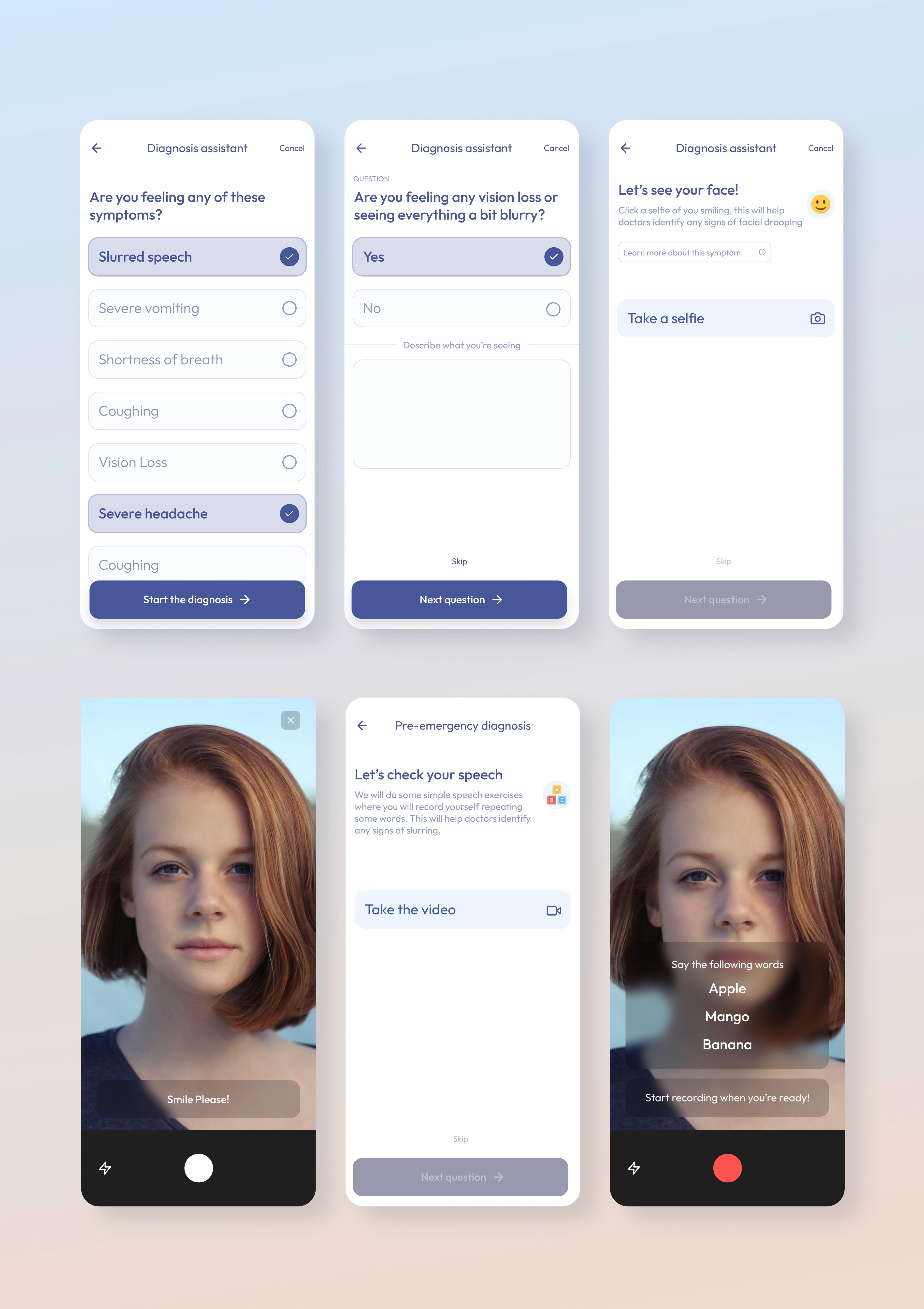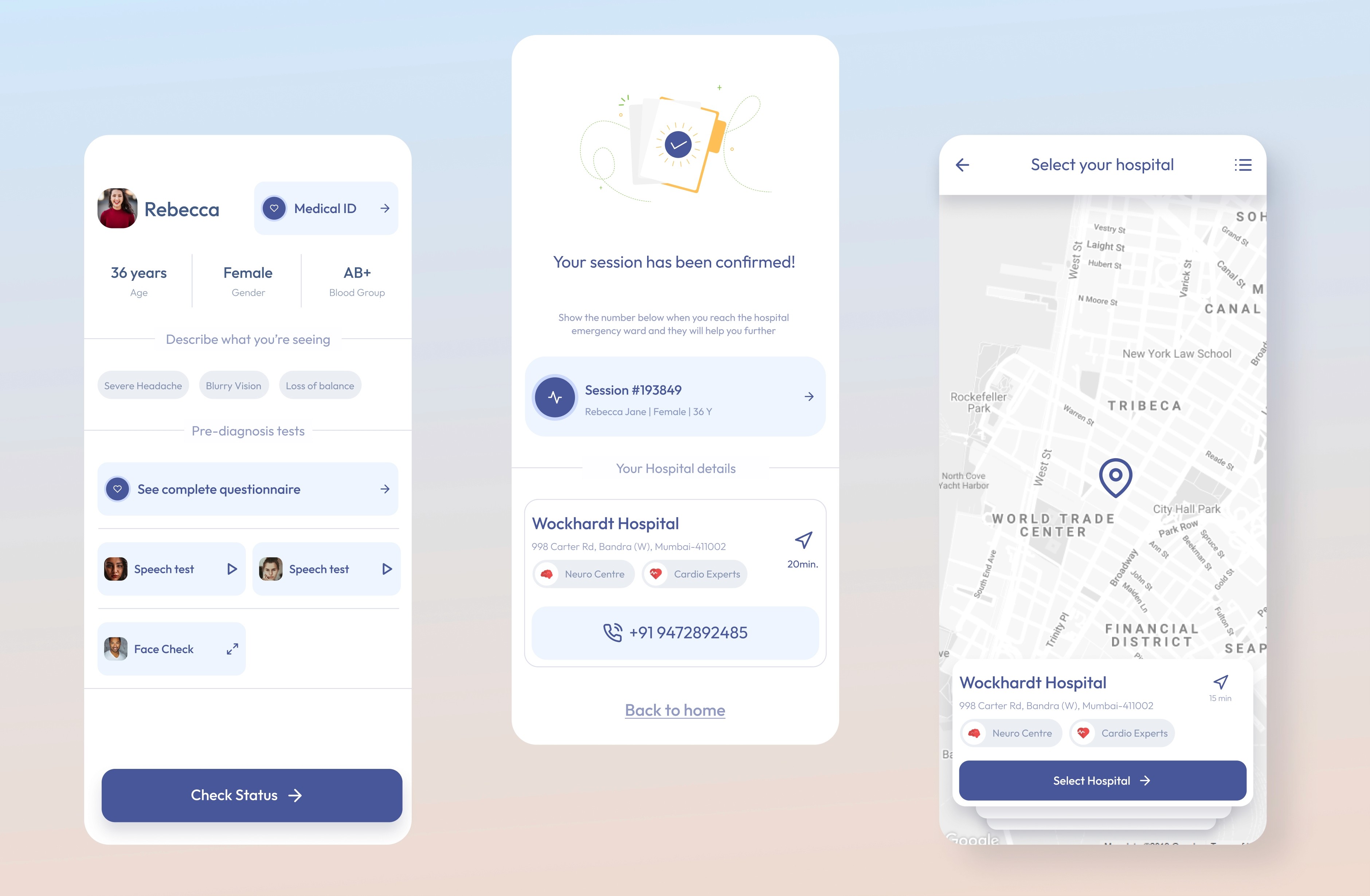Unpaniq
Detecting stroke symptoms via an interactive health app
Overview
The project brief
A doctor with prior experience in the ER noticed some glaring bottlenecks in the emergency admissions process in Indian hospitals. He identified certain commonly used medical tests that could be conducted with users directly to speed up this process. In that context, he connected with me to discuss an application that would help patients and connected doctors identify stroke symptoms via these tests
Research
Understanding the challenges of emergency diagnosis
The client, through his experience in the emergency ward was able identify the following challenges plaguing current ERs:
01
Most emergency wards are overwhelmed due to the skewed doctor-patient ratio, leading to a severe bottleneck and delays in the emergency admission process
02
Lack of knowledge on pre-diagnosis tests means that consumers will always wait till they see the doctor to do these tests, leading to loss of valuable time in symptom detection
Analysis
Understanding the pre-emergency process
We first set out to learn more about the current process by speaking to the client (a doctor) and his peers. From these discussions, we identified the various symptoms that can be checked via a series of input based tests on a mobile screen. These included most recognised symptoms like chest pain, nausea. headache, loss of balance amongst others. This list would help me select and design the relevant test.
Mapping the stroke detection process
We then worked with the doctor to map the current, physical process of stroke detection, where we outlined all major steps and tests that doctors take at the ER, to identify whether a patient is or can be suffering a stroke. Here, I learnt about various inputs like speech test, where users speak out words on the screen, and the recording would help doctors identify slurring or other cognitive limitations, often found in stroke patients.

Streamlining the process digitally
Once symptoms were identified, we also wanted to close the loop by connecting this data securely to partnered emergency wards and their designated doctors. This would include us recommending patients to access wards with appropriate infrastructure to treat strokes, and also immediately pass on the data to the doctor's station, keeping them in queue and ready for final diagnosis at the ward itself.

Design
Finalising the MVP
The decided response to the challenges above was a mobile-first application that would serve the user across the emergency detection process, from symptom detection, to post diagnosis
Track Symptoms
Receive and log user symptoms via an interactive questionnaire, formulated by medical professionals
Direct to the ER
Help patient identify the nearest hospital with the right emergency medical infrastructure to treat strokes
Connect to doctor
Relay the input to the doctors via a web app on partner hospitals enabling them to pre-diagnose and treat further
Design
Final MVP
Wireframes


